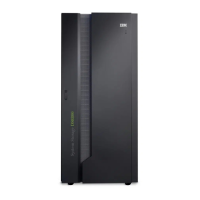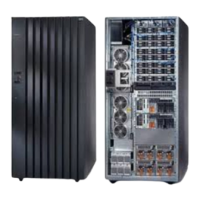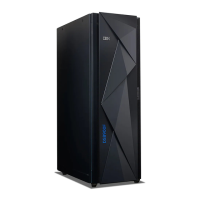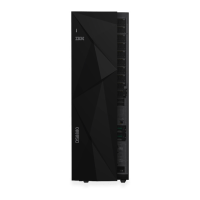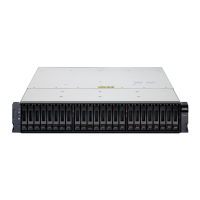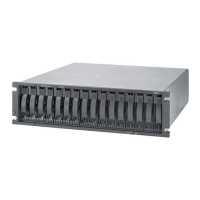It is feasible that multitenancy can be supported in certain environments
without the use of resource groups provided the following constraints are
met:
v Either copy services must be disabled on all DS8000 that share the same
SAN (local and remote sites), or the landlord must configure the
operating system environment on all hosts (or host LPARs) attached to a
SAN which has one or more DS8000 units, so that no tenant can issue
copy services commands.
v The zOS Distribute Data backup feature is disabled on all DS8000 units
in the environment (local and remote sites).
v Thin provisioned volumes (ESE or TSE) are not used on any DS8000 unit
in the environment (local and remote sites).
v On zSeries systems there can be no more than one tenant running in a
given LPAR, and the volume access must be controlled so that a CKD
base volume or alias volume is only accessible by a single tenant’s LPAR
or LPARs.
I/O Priority Manager
The I/O Priority Manager can help you effectively manage quality of
service levels for each application running on your system. This feature
aligns distinct service levels to separate workloads in the system to help
maintain the efficient performance of each DS8000 volume. The I/O
Priority Manager detects when a higher-priority application is hindered by
a lower-priority application that is competing for the same system
resources. This might occur when multiple applications request data from
the same disk drives. When I/O Priority Manager encounters this
situation, it delays lower-priority I/O data to assist the more critical I/O
data in meeting their performance targets.
Use this feature when you are looking to consolidate more workloads on
your system and need to ensure that your system resources are aligned to
match the priority of your applications. This feature is useful in
multitenancy environments.
Note: To enable monitoring, use DS CLI commands to set I/O Priority
Manager to "Monitor" or to "MonitorSNMP," or use the DS Storage
Manager to set I/O Priority Manager to "Monitor" on the Advanced
tab of the Storage Image Properties page. The I/O Priority Manager
feature can be set to "Managed" or "ManagedSNMP," but the I/O
priority is not managed unless the I/O Priority Manager LIC key is
activated.
Peripheral Component Interconnect Express
®
(PCIe) I/O enclosures
The DS8700 and DS8800 processor complexes use a PCIe infrastructure to
access I/O enclosures. PCIe is a standard-based replacement to the
general-purpose PCI expansion bus. PCIe is a full duplex serial I/O
interconnect. Transfers are bi-directional, which means data can flow to
and from a device simultaneously. The PCIe infrastructure uses a
non-blocking switch so that more than one device can transfer data.
In addition, to improve I/O Operations Per Second (IOPS) and sequential
read/write throughput, the I/O enclosures in Model 951 are directly
connected to the internal servers through point-to-point PCIe cables. I/O
enclosures no longer share common "loops," they connect directly to each
server through separate cables and link cards, thus enabling a performance
improvement over previous models.
Chapter 1. Introduction to IBM System Storage DS8000 series 17
|
|
|
|
|
|
|

